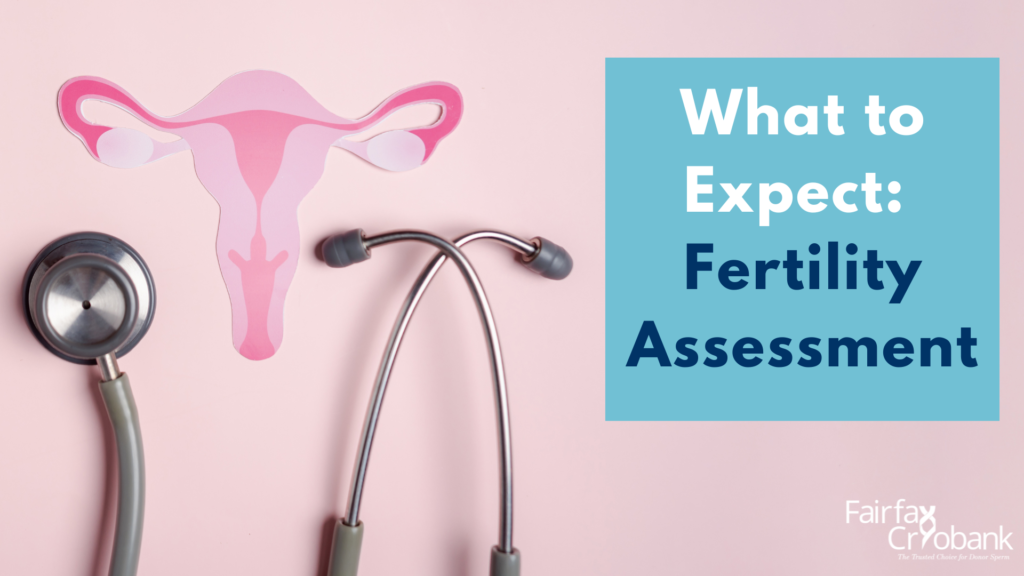WHAT TO EXPECT: FERTILITY ASSESSMENT

WHAT TO EXPECT: FERTILITY ASSESSMENT
A fertility assessment, or fertility evaluation, is a comprehensive interview and series of exams involving one or both partners trying to get pregnant together. Typically, a fertility assessment occurs once the person or couple has reason to believe they may face fertility challenges.
Do You Need a Fertility Assessment?
If you’ve been trying to get pregnant for a year without success, it’s time to consider an evaluation. If you have a condition like endometriosis or PCOS that can affect fertility, you may wish to do so sooner so that you don’t spend valuable time trying to get pregnant without medical intervention.
What Does a Fertility Assessment Look For?
A fertility assessment looks at the gestational (the one who will carry the pregnancy) partner’s fertility and can also include an evaluation of the non-gestational partner’s relevant fertility. If the non-gestational partner is male, a total fertility workup is often recommended for him to identify or eliminate male-factor infertility. If the non-gestational partner is female, the doctor will also complete a fertility workup if they wish to do reciprocal IVF (where the non-gestational partner’s egg is used to impregnate the gestational partner).
Step 1: Exam and Interview
No matter who is evaluated, the first step is a basic physical exam and a review of sexual/medical history. If a male partner is assessed, he will provide a sperm sample for semen analysis to check the volume, sperm count, motility (speed), and morphology (shape). If there is any indication of a potential issue with the sperm, the doctor may order further genetic testing to identify or rule out chromosomal abnormalities that can cause low or absent sperm count.
Step 2: Initial Tests
For the gestational partner, the doctor will use bloodwork, an internal ultrasound exam, and/or an ovulation test kit (which you take home and perform there, using urine test strips) to determine whether ovulation is taking place. The blood tests look for appropriate levels of the hormone progesterone or the gonadotropin hormones FSH (follicle stimulating hormone), LH (luteinizing hormone), and hCG (human chorionic gonadotropin).
Your doctor may also check your ovarian reserve (how many eggs you have left) via hormone testing. If indicated, they may measure your ovarian response to various fertility medications.
Because each test takes time to be performed, processed, and interpreted, you’ll have to return to the doctor for multiple visits or receive information by phone.
Step 3: Diagnostic Tests
If your levels are off, your doctor will dig deeper for answers with more bloodwork and diagnostic tests. If ovulation is confirmed, the next step is a diagnostic procedure called a hysterosalpingogram, an x-ray of your fallopian tubes and uterus with special contrast dye read by the x-ray machine.
Before the procedure, your doctor will insert the dye into your uterine cavity by opening your vagina with a speculum, threading a small catheter through your cervix, and then placing the dye into your uterus through the tube. Up to 80% of people find the procedure mildly to moderately painful, but there are options for pain relief that you can ask your doctor about. By seeing where the dye flows, the doctor can assess whether your fallopian tubes have any structural blocks and, if so, exactly where they are.
Depending on your specific case, your doctor may also suggest diagnostic tests like further ultrasound exams, hysterosonography (a procedure that injects salt water into the uterus and then uses ultrasound to look for structural abnormalities that the saline makes visible), sonoHSG (which works like a hysterosalpingogram, except it uses saline and air bubbles to assess the uterine cavity and fallopian tubes), or exploratory laparoscopy (which is used to diagnose endometriosis).
Step 4: Results
Once the doctor has interpreted all your tests, you’ll have an appointment to review everything. During this, they will give you your options for fertility treatments (should you need them) and offer their recommendation for how to proceed. A good fertility doctor will always listen and ask questions about your financial and emotional limits regarding fertility treatments.
You and Your Doctor
A fertility assessment can be anxiety-producing, so it’s essential to work with a doctor who ensures you feel safe, comfortable, and listened to. No matter what fertility challenges you might face, having a trusted team member who can clearly explain complicated medical terminology to you and understands how profoundly emotional fertility can be is critical.
Everyone’s journey to parenthood is unique. Whether you’re an LGBTQ+ family, a single mom by choice, or a couple facing male infertility or other issues, the road to building a family can be long and challenging. The doctor patient relationship during this time is one that can make or break the experience, so choosing a doctor that respects your family structure and goals of building a family is important.
Looking for more information? Explore our other blog posts and resource center for more information on fertility, LBGTQ+ family building, and growing your family with donor sperm.







